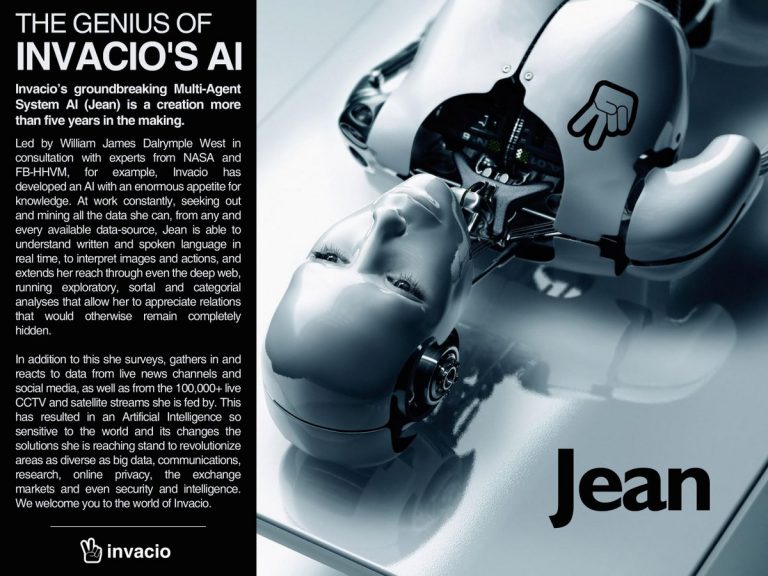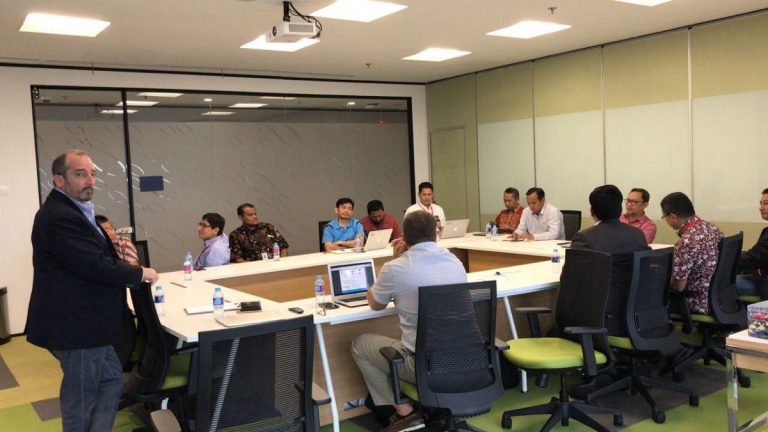
2018-9-17 21:35 |
The fourth industrial revolution is upon us and the machines are coming to take your job: but which industries are going to get hit hardest when Artificial Intelligence comes of age?
Nobody knows, is the truthful answer. We know that machine learning will change the world and automation will kill anywhere between 20% and two-thirds of the jobs on the open market.
Blockchain technology is accelerating AI research, to the extent that there are even companies like DeepBrain Chain that specialize in nothing but providing computing resources to AI developers.
Former Bank of England chief executive Antony Jenkins suggests half of customer service jobs will fall to the neural networks, while a McKinsey study reckoned 73 million jobs will disappear by 2030. That’s a third of the US workforce.
AI surgeons, soldiers and Judges are already here, and there really isn’t a job that computers or robots won’t be able to improve upon in the end.
The debates about a universal basic wage are already kicking off, while the optimists cling to the contradictory belief that automation will create as many jobs as it kills. It won’t. By definition, automation is going to put lots of us out to pasture. But who is going to hit hardest, and who is going to get hit first?
Here are our top five jobs that Artificial Intelligence will take from us and number five is a kick in the guts for the people that have devoted their lives to the neural networks.
1. Customer Service1.4 billion of us will interact with a chatbot this year and they’re getting so good that you might not even know it. That’s bad news for the army of customer service staff that clock on to get shouted at by angry customers each and every day.
Chatbots are racing ahead, learning natural language patterns, dialects and their entire company product libraries. KLM handles 16,000 interactions a week. In the first six months of service, its BB chatbot sent more than 500,000 messages. As it analyzes big data and the language processing improves, that’s only going to increase.
Companies are getting smarter with touchpoints and customer service now comes in the form of instant messenger, as well as phone calls. IBM recently predicted that 85% of customer service enquiries will be handled by AI as early as 2020.
Don’t think this is just call center workers. Banks, hotels and fast food restaurants have all introduced automated systems to streamline their service and cut workers.
There will always be special cases that require a human touch, but the rank and file of customer service agents will simply become redundant as the computers take over. In 2017, more than 2.7 million customer service staff went to work in America alone, so if IBM is right then 2.3 million people will be looking for work in two years.
Early chatbots were a clunky mess, but they are rapidly getting better and the natural language patterns are starting to fool us on a regular basis.
This is good news for the customer. For the people that earn their living in the service industry? Not so much.
2. DriversSelf-driving cars are tantalizingly close and most of us are looking forward to the day when the car takes the wheel. But not all of us.
There are 3.5 million truck drivers in the US that are watching the likes of Otto and Tesla’s upcoming self-driving truck with nervous apprehension. Add to that the 223,000 licensed taxi drivers in the US that were already coming under fire from Uber and Lyft, and that’s almost 4 million jobs at stake.
As for the champions of the gig economy, it was never Uber’s plan to keep an army of drivers working for long. The company’s long-term goal was always to ditch the owner-driver structure at the earliest convenience and send a fleet of autonomous cars out in their place.
Uber claims to have 750,000 drivers on the road in North America right now, while Lyft claims to have 1.4 million. A number of smaller ride hailing firms have sprung up, too.
Not all of the drivers are active and only a fraction of them have devoted their lives to driving full-time. They had better chase the surge charges while they can, however, as this gig is coming to an end.
Google’s Waymo, Tesla, GM and Uber have self-driving car prototypes out on the road already as they perfect their computer vision and ‘reflexes’. Apple is even rumored to be working on its own secret project and we should have Level 5 autonomy, which means the car won’t even have a steering wheel or pedals, as early as 2021.
Truck drivers should get a stay of execution because human nature simply won’t trust Artificial Intelligence with 80,000lb of fast moving metal for a while. In time, they will become little more than systems managers, that are ready to take over if the computers get it wrong and the computer vision doesn’t spot a car turning in front. By 2023, they may simply be redundant.
800,000 general delivery drivers, 690,000 bus drivers, 35,000 locomotive engineers and even pilots will soon join them on the employment scrapheap. So,more than 7 million people need to find a new driving force and that is not going to be easy.
3. Factory workersThe US Bureau of Labor Statistics reveals there are 12.4 million factory workers in the US alone. Some of them are safe, but any job that involves simple repetition is set to go in the not too distant future.
McKinsey estimates that 87% of production could be automated with current tech, but companies must get past the sticker shock of implementing new systems. The rapidly advancing technology has actually saved workers, as companies are reluctant to invest heavily in tech that could be redundant before it has paid for itself.
If 87% of factory workers find themselves surplus to requirements, that’s another 10.8 million people ‘looking for opportunities’.
At one factory in Japan, industrial robots busy themselves building more industrial robots, while four staff monitor their progress. Philips builds electric razors with robots in the Netherlands, with just nine staff and 126 robots. The future is now.
‘Lights Out” production is a reality already and this is a production line that continues round the clock, never tires and shouldn’t make mistakes. Quality control should improve, workers will be removed from dangerous environments and the running costs are lower. It’s all upside, unless you’re one of those facing unemployment.
4. Administrative StaffPaper pushing has become an integral part of the modern corporate landscape and the public sector and healthcare industries are even worse. As for the amount of human resources required to manage human resources, the irony is clear.
There are 4 million secretaries and administrative assistants out there at the moment, according to the Bureau of Labor Statistics, but that is the tip of the iceberg.
Middle managers often do little more than process paperwork and sign off on other peoples’ work. Chains of responsibility mean forms must be signed, forwarded, stamped and filed. Even in digital form, this is an antiquated process.
AI will work with blockchain technology to insert the sign-off into the process. These immutable records will provide accountability, without a signature. AI can simply oversee the blockchain and flag up problems for a limited number of staff to address. All of the ‘busy work’ will fall by the wayside, together with most of the workforce.
Cloud-based AI is already in place and the likes of Hyperscience have already streamlined back office work, while x.ai takes the hard work out of arranging meetings. These are mere tasters of what is to come from machine learning.
Administration is such a broad spectrum that there are no reliable figures for the number of employees that fall under this umbrella. It’s tens of millions of people, though, and Forrester Research claims that 86% of advanced administrative jobs like book-keeping and accounting could be automated within years. That doesn’t leave much hope for the humbler admin assistant.
5. ProgrammingIf there’s one job that is safe from the machines, you would think it would be the one that controls them. You would be wrong.
Programmers and coders are the current rock stars, commanding vast salaries while the likes of Google, Apple and cryptocurrency exchanges vie for their services. But the ultimate irony is that the AI systems these modern day alchemists are building will one day replace them.
Advanced AI could produce 1000 variations of the same code, test, refine and implement it while even the most industrious human being is just getting warmed up. In the end, we’ll have to turn the coding over to the computer itself and that is an intriguing and potentially frightening prospect.
If the AI produces its own code, and creates a new blockchain, then we have to trust the systems to keep out best interests at heart. AI doesn’t have a heart, so this is a leap of faith and this is where the technology could run away from us.
Microsoft and Cambridge University have already produced AI that can program, sort of, by stitching together existing code. It isn’t quite up to rock star levels yet, but this is a positive reinforcement loop. As the AI gets better, it produces better code, which produces better AI. Eventually, even the best human beings will look like cavemen banging on an iPad in comparison.
Rice University has a rudimentary alternative called BAYOU, with US Department of Defense funding, which studied Github and learnt how to code. Really it’s a search engine for code right now that can save human coders time. But that’s not the future.
Eventually the machines will go past the people and restructure the code to suit itself. That’s a big moment in human history and the moment we have to have faith.
The machines might not subjugate us, but they will certainly render a lot of college degrees obsolete overnight. Evans Data Corp reckons there are 3.6 million programmers in the US alone and most of them will have to find something new. A select few might keep a job ringfencing technology to keep the AI behind some form of virtual bars.
Will that work? Probably not in the long run.
The author is not currently invested in digital assets.
The post Artificial Intelligence Will Kill These Jobs (And #5 Has Nobody Else To Blame) appeared first on Crypto Briefing.
origin »JobsCoin (JOBS) на Currencies.ru
|
|










